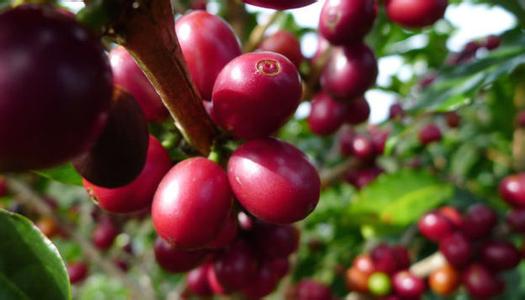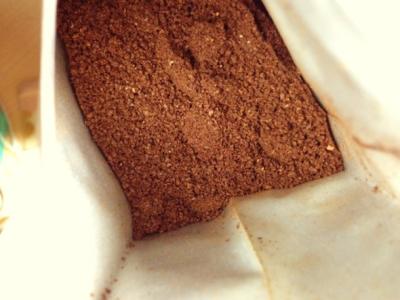The history of coffee origin and traditional agricultural cultivation techniques in Ethiopia
The history of coffee origin and traditional agricultural cultivation techniques in Ethiopia
In the fifties and sixties of this century, many African countries became independent one after another and adopted green, yellow and red as the colors of the national flag, so they were called "pan-African colors".
Ethiopia is one of the ancient countries in Africa, with a long history of more than 3000 years, giving green, yellow and red colors deeper roots in this land. Historically, they are closely related to the liturgy of the Coptic church, and are worshipped as the symbol of the trinity of the Father, the son and the Holy Spirit, reflecting the three virtues of loyalty, hope and kindness advocated by human freedom.
These three colors also represent three regions of Ethiopia: Tikleh (red), Amhara (yellow) and Theo (green). Green represents fertile land, mild climate and rich plant resources, as well as hope for the future; yellow symbolizes peace and fraternity, as well as the people's determination to build the country; and red symbolizes that the people are ready to shed blood and sacrifice to defend the motherland.
According to Fulaigo coffee experts, Ethiopians are full of enthusiasm for coffee. In addition to their daily drinking, they often make coffee to entertain friends and friends after banquets. With the passage of time, this behavior gradually became a strong coffee culture in Ethiopia.
Harald coffee, which grows within 900m from the Darolebu plain to 2700 m from the highland mountain range of Chercher in eastern Ethiopia. These mountains do provide unique characteristics for these perennial coffee beans: plump, striped fruit, moderately acidic, and typical mocha flavor.
Yega Coffee is one of the most distinctive coffee in the world, which is rare and expensive. It is produced in the highlands of Ethiopia's sidamo province (4000 feet above sea level), in a relatively high and narrow area. Yega snow coffee is of high quality that is difficult for ordinary mochas to reach, and it is also an excellent representative of African washed coffee.
Although Ethiopia is the first country in the world to grow coffee and maintain the oldest coffee culture, it is usually grown in small-scale households and maintains very traditional and ancient coffee cultivation techniques and methods. therefore, pesticides and other chemical fertilizers will never be used. Therefore, Ethiopian coffee, like Yemeni mocha coffee, is the best choice for those who advocate nature.

Important Notice :
前街咖啡 FrontStreet Coffee has moved to new addredd:
FrontStreet Coffee Address: 315,Donghua East Road,GuangZhou
Tel:020 38364473
- Prev

The brewing method of Rosa Coffee-introduction to the taste of the blue standard batch of Ruoxia Coffee
Espresso is made from 80-96 degrees Celsius hot water at 8-9 atmospheres through compacted coffee cakes, usually only 30 milliliters per cup. It is one of the strongest of the common coffee, with a unique aroma and a touch of oil (Crema) floating on the surface. It can be drunk alone; it can also be further made into a variety of other drinks.
- Next

Yega Xuefei Coffee Solar treatment aricha name is a cooperative or a producing area
Yega Chuefei Coffee Sun treated aricha name is a cooperative or producing area wet and cold, full of wine, with obvious dark chocolate taste in the mouth. But the bitter and astringent taste is prominent, and the miscellaneous taste also appears. I think it is still not suitable to make ice drop Yega Chuefei's dry blueberry flavor is particularly prominent, after grinding the room full of blueberry fragrance. In the Gedeo district, 4km west of the town of Yega, there are 650s to 700s.
Related
- Detailed explanation of Jadeite planting Land in Panamanian Jadeite Manor introduction to the grading system of Jadeite competitive bidding, Red bid, Green bid and Rose Summer
- Story of Coffee planting in Brenka region of Costa Rica Stonehenge Manor anaerobic heavy honey treatment of flavor mouth
- What's on the barrel of Blue Mountain Coffee beans?
- Can American coffee also pull flowers? How to use hot American style to pull out a good-looking pattern?
- Can you make a cold extract with coffee beans? What is the right proportion for cold-extracted coffee formula?
- Indonesian PWN Gold Mandrine Coffee Origin Features Flavor How to Chong? Mandolin coffee is American.
- A brief introduction to the flavor characteristics of Brazilian yellow bourbon coffee beans
- What is the effect of different water quality on the flavor of cold-extracted coffee? What kind of water is best for brewing coffee?
- Why do you think of Rose Summer whenever you mention Panamanian coffee?
- Introduction to the characteristics of authentic blue mountain coffee bean producing areas? What is the CIB Coffee Authority in Jamaica?

